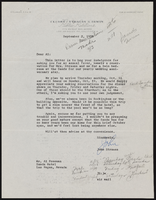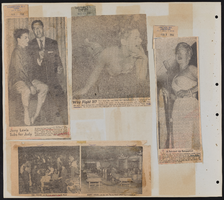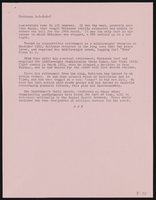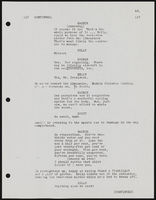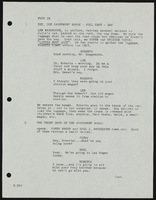Search the Special Collections and Archives Portal
Search Results
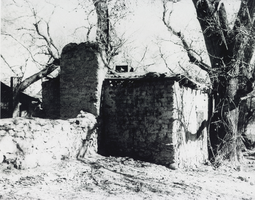
Photograph of ruins of the Mormon Fort, Las Vegas, Nevada, circa 1931
Date
1929 to 1933
Archival Collection
Description
Abandoned adobe buildings at the Mormon Fort site (now known as the Old Mormon Fort), Las Vegas, Nevada. Site Name: Las Vegas Mormon Fort (Las Vegas, Nev.)
Image

Photograph of ruins of an office building, Rhyolite (Nev.), 1940
Date
1940
Archival Collection
Description
J. Lucas Cadogan's former office building in 1906, Rhyolite, Nevada. Inscription with image reads: "Rhyelite Nevada in 1906 there were ten thousand people here J Lucas Cadogan had an office in this building. At that time he was a broker [sic]. Now in 1940 a real ghost town"
Image
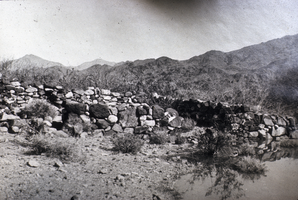
Slide of the Callville ruins, Callville, Nevada, circa 1930s
Date
1930 to 1939
Archival Collection
Description
A view of the Callville ruins at Lake Mead, Nevada. Callville is a former settlement of Clark County, Nevada. Abandoned in 1869, Callville was submerged under 400 feet (120 m) of water after the Colorado River was dammed to form Lake Mead. Callville Bay recreation area is located at the site. Located 350 miles (560 km) from Salt Lake City, Calville was situated on the west bank of the Colorado River, in what was at the time Pah-Ute County, Arizona Territory. The main road to the settlement was along the Virgin River close to St. Thomas, Nevada before heading over hills to the west. A road connected Callville with the main highway at Las Vegas. Callville was established in December 2, 1864 by Anson Call, Dr. James M. Whitmore, A. M. Cannon, Jacob Hamblin and son. It was at the time the southernmost outpost of Mormon settlement. Callville was one of seven Mormon settlements on or near the Muddy River, the others being St. Thomas, Saint Joseph, Overton, West Point, Mill Point later Simonsville and Rioville on the Colorado River above its confluence with the Virgin River. Callville became the county seat of Pah-Ute County, Arizona Territory, in December 1865, before the seat was moved on October 1, 1867 to St. Thomas.
Image
Pagination
Refine my results
Content Type
Creator or Contributor
Subject
Archival Collection
Digital Project
Resource Type
Year
Material Type
Place
Language
Records Classification

